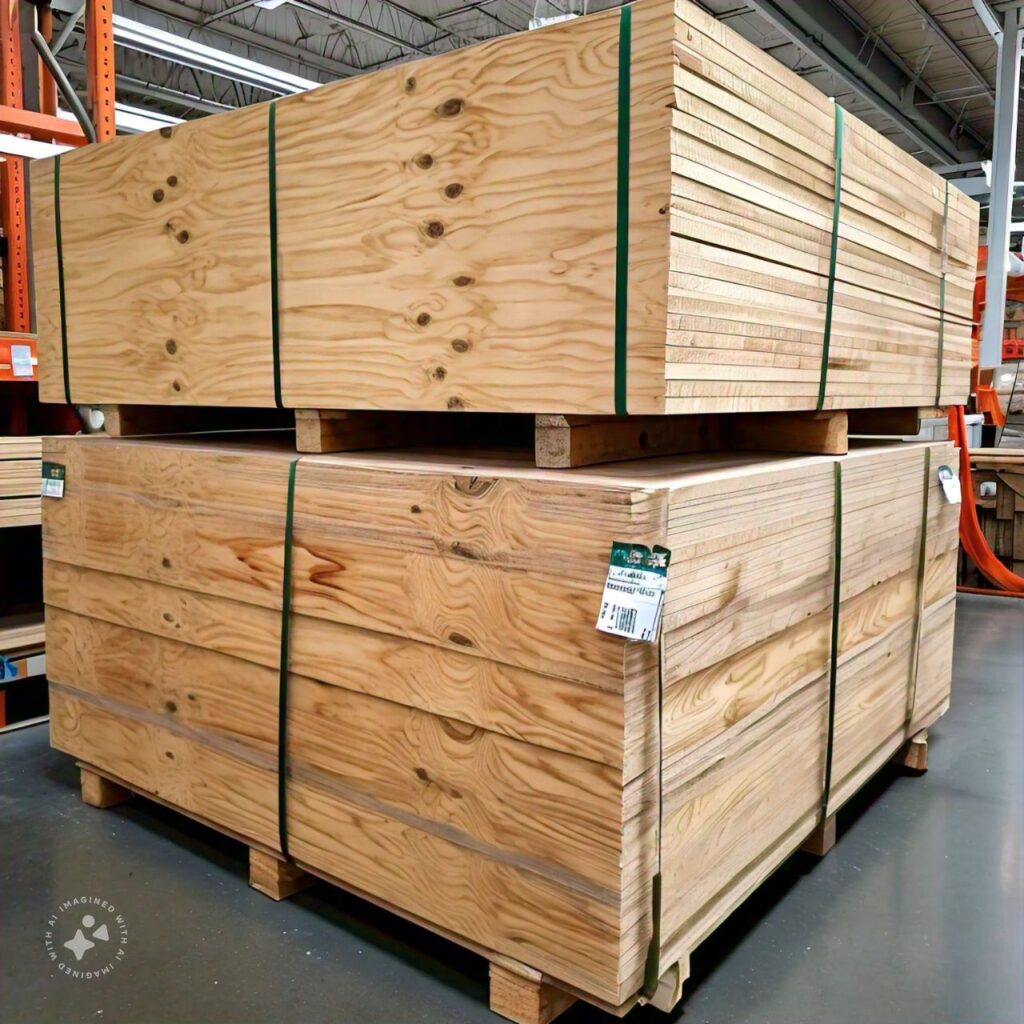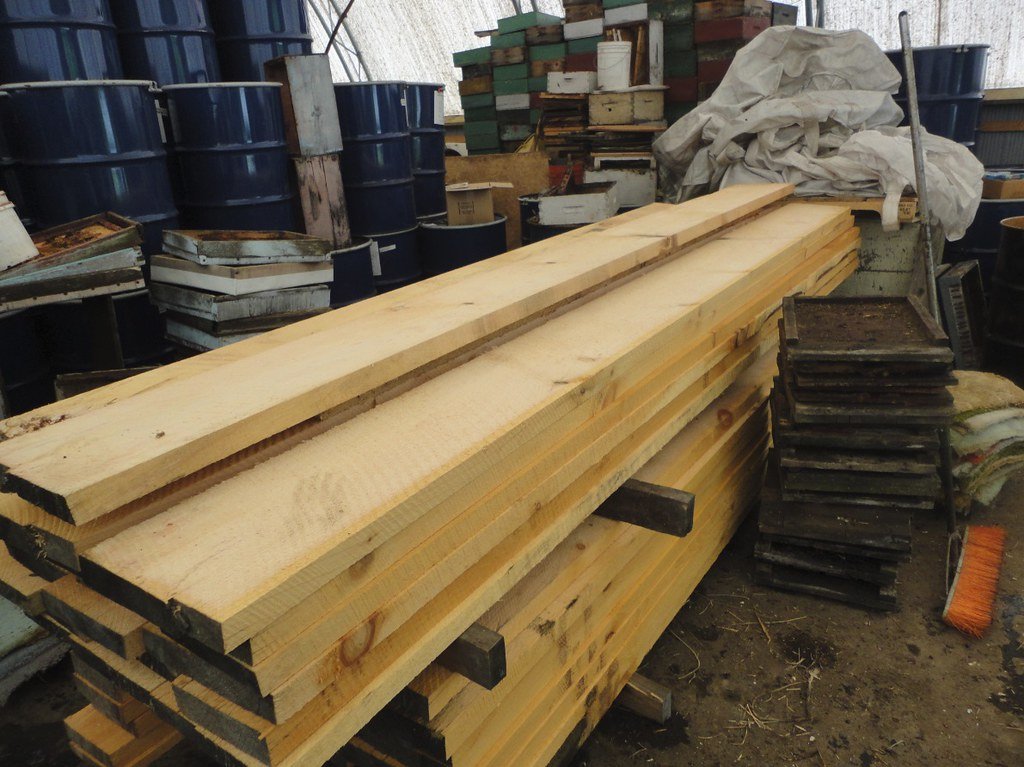There are many reasons why shopping at the big home improvement centers is better than at the local lumberyard. First, lumber yards focus on carrying lumber, while lumber yards are only a tiny portion of a home improvement center. When the first Home Depot opened in 1979, part of their advertising claimed they had everything. Lowe’s has worked hard to one-up them on that claim.
But inventory isn’t everything. People don’t shop at these stores just because they can get their lumber, plumbing, and paint all in one place; they do so for the service. Both chains pride themselves on their customer service, hiring knowledgeable people. The people working in the various departments in these stores can not only tell you where to find something in their department but also make recommendations on how to use it.
One of the many ways these retail giants provide excellent customer service is by installing panel and radial arm saws in the store. Sales associates in the lumber department are trained to assist customers by making cuts for them, significantly cutting sheets of plywood down on the panel saw to a size that will fit in their vehicle.

There are limitations to this service, some established by policy and others by the practicalities of trying to take care of many customers. Some people have complained about the service they have received in this area, but for the most part, they had unrealistic expectations about what store employees should do for them.
What’s Included in the Cutting Service?
Getting the most out of this cutting service requires approaching it the right way, making it easy for yourself and for the lumber associate who does the cutting. Anything that makes the job easier for them will result in the job being done more to the customer’s satisfaction.
Both chains have panel saws, allowing them to crosscut and rip plywood sheets. However, it is easier to crosscut on a panel saw than to rip on one. Ripping also takes more space, which can be a problem when the store is busy. Home Depot says on their saw that they won’t do rip cuts, although most employees will do them when treated nicely.
Most Home Depot stores also have a radial arm saw, which allows them to cut dimensional lumber 1” and 2” thick to length. However, they can’t crosscut 4”x 4” or larger lumber. Nor do they rip boards, even in the cases where they have a table saw available.
Architectural trim molding will only be rough-cut and will not be mitered in any way. Due to the heavy use of their tools, they can’t do the OK, accurate cutting necessary to ensure that trim pieces are ready for installation. Always count on having to recut them, having them cut a little long to allow for recutting.
Both chains provide two cuts for free. After that, they charge 50 cents for each additional cut. Some employees will let this slide, especially if the store isn’t busy. But don’t count on it; take advantage of them.
Plan the Cuts
As with anything else in a woodworking project, planning is important. Chances are the lumber department’s sales associates are going to be busy, so they’ll appreciate a customer who doesn’t waste their time. Just like doing a project at home, planning the cuts to make the most efficient use of the wood and to cut it the easiest will help ensure that the results meet the project’s needs.
Planning, of course, includes planning what material is needed for the project. Arriving at the store and deciding what will be required is an excellent waste of time. Worse for the sales associate is someone who doesn’t know what they want, expects help selecting it, and then wants it cut.
Neither retailer guarantees the accuracy of cutting services. Nevertheless, lumber department sales associates will do their best. However, the equipment they are working with is well-used, and the blades are general-purpose, not fine-cutting blades. So don’t expect them to do finish cuts—that’s not what they are doing. They’re rough-cutting material so that their customers can get it home.
Bringing your own tape measure, pencil, and T-square can help. This will allow you to measure and mark the wood for the store employees. This is the first part of any cut, so doing it for them makes the job easier.
The other advantage of marking the wood rather than allowing the store employee to do so is that tape measures can vary. While the lumber associates carry tape measures, theirs are well-used, and the hook at the end might be worn or bent. Marking the wood for cutting with the same tape measure that was used to measure the project at home or will be used for further cuts helps ensure accuracy.
Time it Right
Cutting wood for customers is an additional duty for lumber associates, as well as helping other customers. So, the best way to ensure good service is to go when the lumber department is least likely to be busy and store personnel is available. Going during busy times guarantees a long wait and an irritated customer.
The best time to go to the store if the wood will need to be cut is between 9 am and 3 pm. Before 9 in the morning, there are a lot of contractors in the store getting what they need for their day’s work. After 3 in the afternoon, the store starts filling up with homeowners buying material for DIY projects. Saturdays are complex all day, but Sundays are good, especially early in the morning or late in the afternoon.
Select and Mark the Material
Generally, it’s not a good idea to have the sales associates help load the material unless necessary. Both chains buy lumber that is not kiln-dried, so warping, twisting, and cupping are all major considerations. The only way to ensure straight boards or pieces of plywood that don’t have damaged corners is to take the time to dig through them, selecting with care. Sales associates don’t do that; they grab as many pieces as are necessary.
Selecting the wood also allows an excellent opportunity to mark it for the cuts. Sales associates are accustomed to seeing that, so they won’t think it strange. It’s considerably easier to mark plywood sheets while they’re still stacked than to mark them once they’re on the cart.
Both companies have extensive websites listing what’s in stock at the stores and items that can be ordered. Going online before ensuring the desired material is available at the local store can be instrumental. The website is keyed to the stores’ inventory, and as long as you have selected “your store,” the web page will indicate if it is in stock. If it isn’t, it will say where it is.
The Lowe’s website goes a step further than this, telling the location in the store, down to the bay in the aisle. This can save time wandering around the store, trying to find some obscure part.
The Right Cart Helps
If plywood needs to be cut, it’s best to use a vertical lumber cart. The center slot on that cart allows the sheets of plywood to be stood up, just like they need to be for the panel saw. The deck is close to the same height as the bottom of the panel saw, making moving material from the cart to the saw easy. If the plywood is on a flat cart, it takes two people to unload it and load it into the panel saw.
In the case of dimensional lumber, a vertical lumber cart or their higher flat carts can be used, but not the low flat cart, which is designed for heavy or bulky items like water heaters and bags of concrete.
One nice thing in both stores is that people will generally leave carts alone if there’s something on them. That one item indicates that the cart is in use; people looking for one will typically respect that. But if the cart is left empty, it’s fair game for anyone looking for a cart. If nothing else, place something temporarily on the cart to hold it, like a 2”x 4”, and then return it to its place after loading other material.
Getting the Best Cuts
Being friendly and courteous to the lumber associate is an integral part of the process, as it will help ensure that they do their best. While store policy is that they don’t provide accurate or fine cuts, if the employee feels they are being treated well by the customer, they’ll go the extra mile to make those cuts as precise as possible.
Taking a moment to talk about the project is a good idea, too. Not only do you bring the associate into the work, giving them a sense of ownership, which can result in a better job, but they might offer up some good ideas to improve the project.
Plan the plywood cuts so they can be made vertically as much as possible. Making vertical cuts on a panel saw is easier and more accurate than horizontal ones. So, if a sheet of plywood needs to be cut into four 2’ x 4’ panels, it’s easier to make three vertical cuts every 24” rather than ripping the sheet at 2’ and then cross-cutting each of those pieces in half.
It is always best to load plywood into a panel saw with the face side to the back. This will help reduce the splintering caused by the cut. While they use carbide-tipped blades on their saws, those blades get a lot of use, so they might not be as sharp as a new blade.
Finally, be helpful. If the sales associate needs the cart moved, align it with the saw and do it for them. If they need help moving a sheet of plywood onto the saw, lend a hand. Take the cut pieces and load them back onto the cart.




